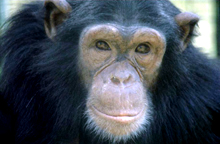News * Abou us * the ENB team * DONATE * Activities * Search * IISD RS home * IISD.org * RSS * What is RSS? * Links |
|
MEA Bulletin
15 March 2006
By Stanley Johnson, Advisor to GRASP On September 12th last year, The Independent, a leading UK newspaper, devoted the whole of its front page, two of its inside pages, and an editorial, to the “international agreement on the conservation of the great apes” signed in Kinshasa, Democratic Republic of the Congo (DRC). The author of the article described the agreement as being “on a par with the 1982 whaling moratorium and the 1997 Kyoto protocol on climate change.” Worldwide as few as 350,000 great apes - the gorillas, chimpanzees, bonobos and orangutans - which once numbered in the millions, might now survive. Farming, logging, civil war, forest fires, illegal hunting, and disease had taken their toll. Whole species or sub-species, for example the Sumatran orangutan, could become extinct within a decade or two. The Kinshasa “agreement”, so the Independent argued, offered a real chance to halt the “remorseless jungle slaughter” of the great apes, which on current trends was likely to kill them all off within a generation. Klaus Toepfer, Executive Director of UNEP, launched the United Nations Great Ape Survival Project (GRASP) at the World Summit on Sustainable Development in 2002 and quickly realized that the Kinshasa meeting could ensure that the initiative truly matured and prospered. He was not alone in this endeavour. Among international organisations, UNESCO lent its full support. Donor countries also came forward. The United Kingdom, for example, over the last few years has emerged as one of the leading backers of GRASP. While some countries, like the United States, have focussed on bilateral efforts, for example through the Congo Basin Forest Partnership, others – like France, Germany, Ireland and Japan - have given to and through GRASP. The European Union recently announced a 2.4 million euro grant for GRASP, the support being principally aimed at six projects deemed vital for the survival of threatened great ape populations. The September 2005 meeting in Kinshasa had a double objective: to raise international awareness of the plight of the great apes and to strengthen the institutional arrangements for dealing with this issue. But what precisely does the Kinshasa agreement, as apostrophised by The Independent, say? Essentially it is a high-level political statement on the future of the great apes. The Kinshasa Declaration is not, of course, a legally-binding treaty, but given the framework within which it was negotiated and the status of the participants, many of whom were of ministerial level (including Jim Knight MP, the UK’s Minister for Biodiversity), it is certainly not devoid of moral authority. Some of the key paragraphs of the Declaration are worth noting here. The signatories:
As can be seen from the timeframe of the commitments above, GRASP, like MEAs such as CBD, CMS and Ramsar, is playing its part towards the attainment of the target of halting and reversing the loss of biodiversity by 2010 and the Millennium Development Goals. Efforts to save the great apes have to be seen within the context of other mechanisms and development priorities, including poverty reduction. And indeed, GRASP is working closely with these MEAs on joint programmes towards these goals, such as the CMS’ new gorilla agreement initiative. Should the Kinshasa Declaration, along with the other documents approved in Kinshasa, be seen as a new multilateral environmental agreement? Though the Kinshasa texts are not legally binding in the way that the Kyoto Protocol on climate change or the International Whaling Convention are legally-binding, they share certain important features of those instruments in the sense that they provide a framework of strategic objectives and, more particularly, an institutional framework within which those objectives are to be pursued. GRASP has a governing Council, an Executive Committee, a Scientific Commission and a secretariat, jointly provided by UNEP and UNESCO. Since Kinshasa, a detailed work programme has been prepared and will be considered by the Executive Committee. As noted above, some funding has already been made available, on a voluntary basis, by several donor nations and the European Union. More is being sought. In many ways, therefore, GRASP has the attributes of an MEA. It may not be legally binding, but provided results are obtained, that should not matter. If GRASP can play its part, as so many hope it will, in the battle to ensure the survival of the great apes, the precise legal status of the texts adopted in Kinshasa may come to seem of secondary importance. For further information go to http://www.unep.org/grasp London, 7 March 2006 |



